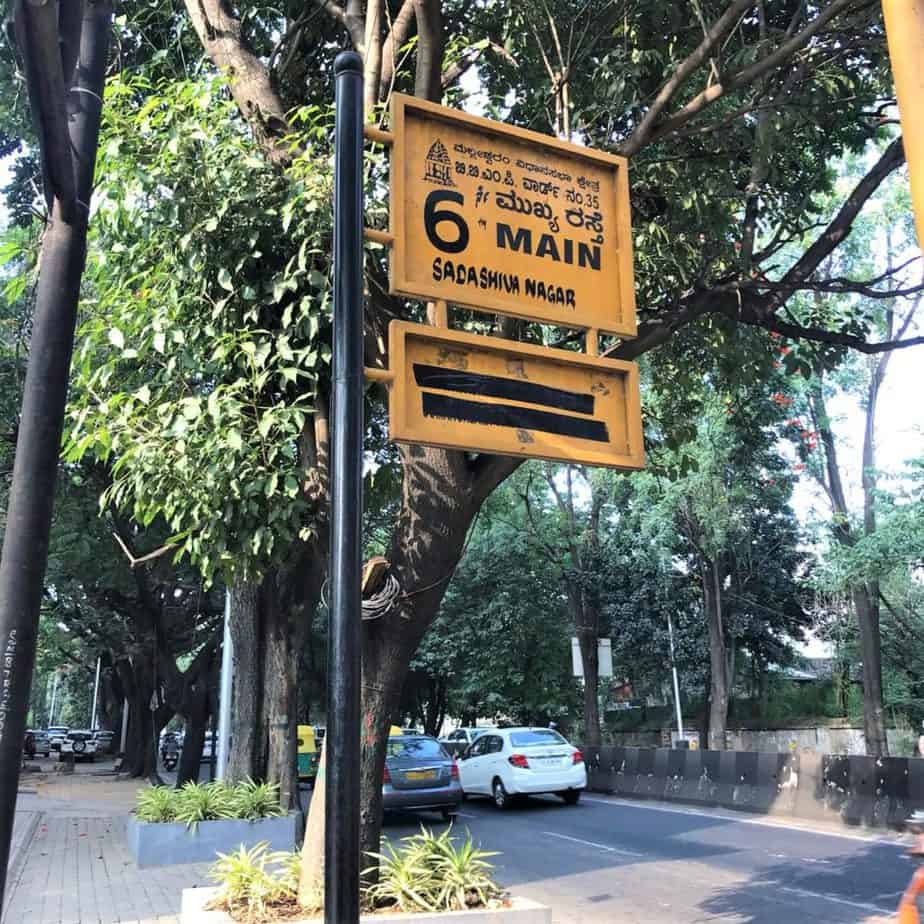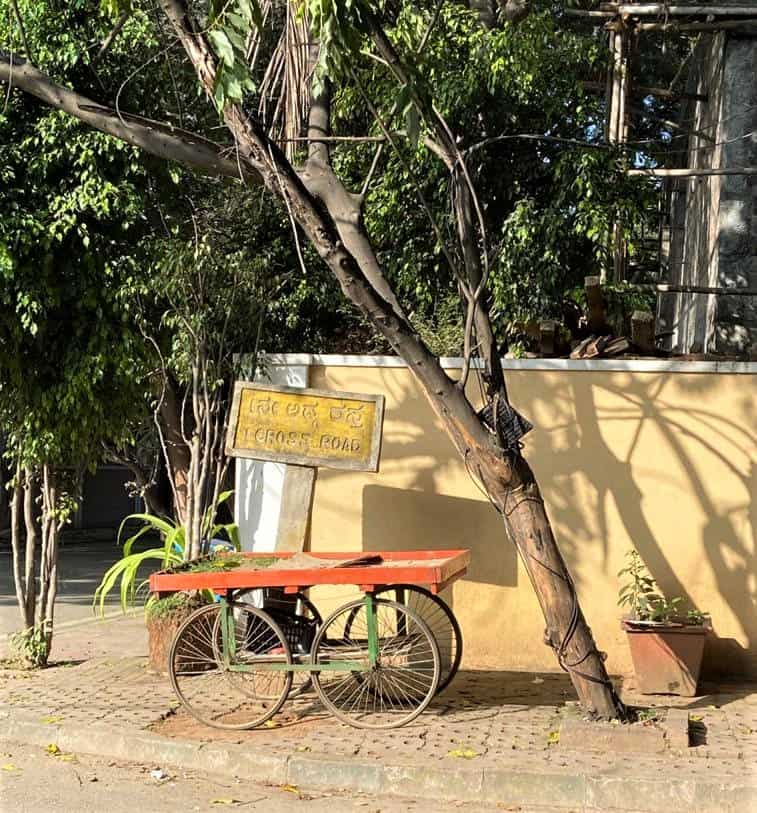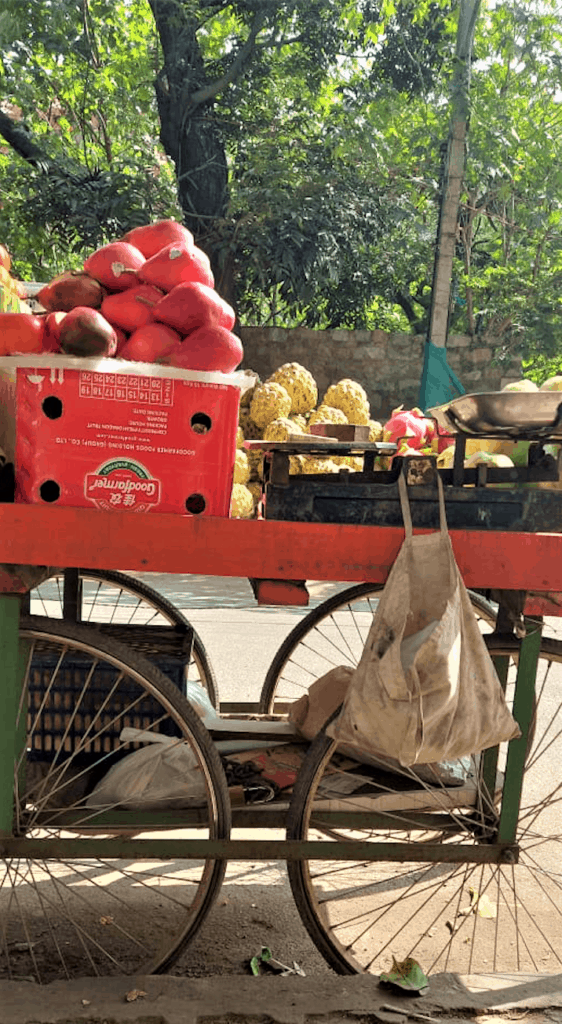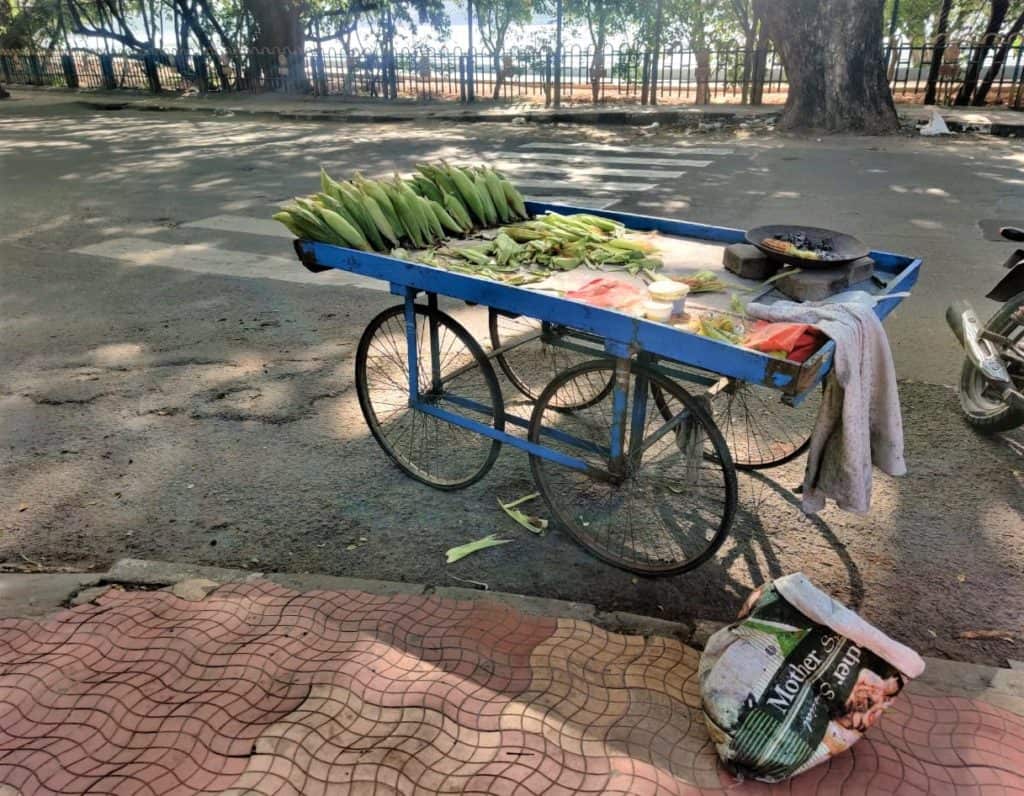This summary of a research project — carried out by a group of students at the Indian Institute for Human Settlements — brings out how the rich and powerful residents of an exclusive and quiet locality in the city influence the use of their public spaces by street vendors.
While street vendors are a common sight in any urban neighbourhood, Sadashivanagar is not just any other neighbourhood. The daunting presence of government officials and politicians — its chief residents — fills the silence and emptiness of the inner streets of this locality. Sadashivanagar, cocooned in between Sankey Tank, Palace Grounds and Mekri Circle, has, perhaps, the largest number of the most powerful people per square kilometre in Karnataka.
With its organic stores, yoga centres, resto-bars, and Thai massage centres, Sadashivanagar definitely knows how to keep it classy.
It is a place one would not expect to see, of all the people, street vendors. But despite its unique character, there is a thriving network of street food vendors in Sadashivanagar.
Who’s the customer?
At first sight, it’s a little absurd that street vendors can exist in a neighbourhood like Sadashivanagar where the residents barely step out of their houses. In the rare moments when they do, it is to get into their cars and drive off. Residents say that they don’t really avail the services of the street vendors, especially after the pandemic started.
Why would street vendors choose to sell here when they can be in neighbouring areas like Malleshwaram and Vyalikaval which have popular markets?
Read more: Bengaluru’s street vendors: A vibrant community deprived of rights
Because, the eliteness of Sadashivanagar also implies that a large number of informal workers have jobs in these houses. They work as domestic workers, drivers, security guards, cooks, construction workers, etc.
Street vendors who sell a variety of food ranging from fruit, tea, snacks, meals, chaat etc, rely on these informal workers. Clearly, the residents are not their customer base. There are very few small eateries in Sadashivanagar, and a Barista or Starbucks are not the most affordable lunch spots for these workers. Clearly, all of them turn to street vendors.
One of them, Shaan, for instance, delivers milk every morning in Sadashivanagar. He used to also sell tea on a bicycle in this neighbourhood a few years ago. In fact, his relationship with Sadashivanagar goes back a generation.

His father was a security guard at one of the bungalows here and his mother worked as a domestic worker. He says, “Here, when there is some construction activity, more workers are hired as compared to Malleshwaram. When I was selling tea here, I could sell at just one construction site and earn enough for the whole day”.
Residents’ rule
Regardless of whether they buy from these street vendors, the powerful residents of Sadashivanagar assert their presence and authority in the area’s public spaces. One of the ways they do this is by regulating the commercial activities of street vendors.

There is a quiet enforcement that stops clustering of vendors. One will never see more than two vendors at a time. They are sparsely scattered all over the neighbourhood. While this is partly to avoid competition from the perspective of vendors, there are also other forces at play.
Read more: “Street vendors are claimants, not intruders”
Shaan told us “Clustering doesn’t look clean to the residents.” Notions of “cleanliness”, “hygiene” and “silence” are associated with “purely residential” areas.
Certain residents of Sadashivanagar are extremely wary of their neighbourhood turning into a market area. They often use their contacts and networks to evict street vendors from their spots.
A policeman says, “Everyone is a VVIP in Sadashivanagar, so they create pressure over BBMP and get them removed from their vending place.”
If you can’t beat them…
A lot of street vendors have to satisfy the whims of not only their customers but also these residents by following their rules. For example, the residents don’t much mind them selling packed foods, as against food in open carts.


So, the few street vendors in the locality have adapted their businesses to suit Sadashivanagar. They sell products like vitamin-rich chaat, cut fruits, soups, and exotic fruits which allow for a certain “healthy” perception of the area.
This is a silent area. These people really like healthy food. They pay more for cut fruits.
A cut-fruit vendor in Sadashivanagar
There are also regulations against using kerosene cylinders for cooking, so automatically a lot of products are eliminated from the list of what a vendor can sell.
Even food delivery platforms like Swiggy, Zomato, and Dunzo, are posing a big challenge for street vendors because of how convenient they are to use.
Read more: Will vendors’ eviction make street food in Bengaluru safer?
The street vendors have attempted to adapt to this technological change by providing similar convenience and delivery-at-doorstep services by maintaining personal relationships with a lot of their customers.
Despite the important role they play in sustaining the informal economy in Sadashivanagar, street vendors are constantly under the radar of the residents. Their conditions are precarious and many vendors had to stop vending in the area after the pandemic.
Allu, a corn vendor, told us, “They smile at us, but they don’t buy from our carts.”
[The names of our interviewees have been changed to preserve their anonymity]
Also Read:
- Why cities must strive for equality to fight COVID-19 effectively
- Street vendors demand relief, offer support to govt in tackling COVID-19
- A hunger problem you can fix: Sadashivanagar residents reach out to migrant workers
- Wanted: New thought and regulation for the informal sector in India in a post-COVID world
[Contributors: Vyshnavi Ramesh, Alefiyah Merchant, Rajat Chaudhary, Elizabeth Thomas, and Aman Kumar Singh]
No neighborhood likes the noise created by hand held loud speakers used by vendors of all kinds in Bangalore.This new fad is growing by the day and is making life hell in resendial localities.Hope the BBMP takes cognisance of this menace and restores peace in residential areas.
Great article and I’m sure this may help open some “eyes.” Noticed that these elite areas still use hand-painted and primitive road and street signage!!